IBM Infoprint Color 1334 (4934)
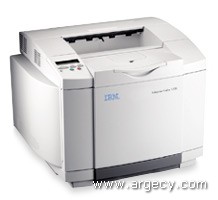
Looking for IBM Infoprint 1334 Parts?
The IBM 4934 Infoprint Color 1334 printer offers up to 30 pages per minute (PPM)(1) for monochrome printing and up to 8 PPM(1) for color. Its very affordable cost, speed in printing monochrome, and color capability make this printer ideal for small workgroups and businesses. The Infoprint Color 1334 comes in a network model only.
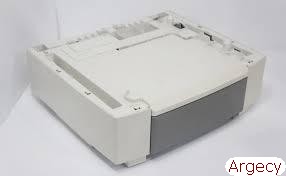 75P5417 530-Sheet Drawer | |
| 75P5418 530-Sheet Tray | |
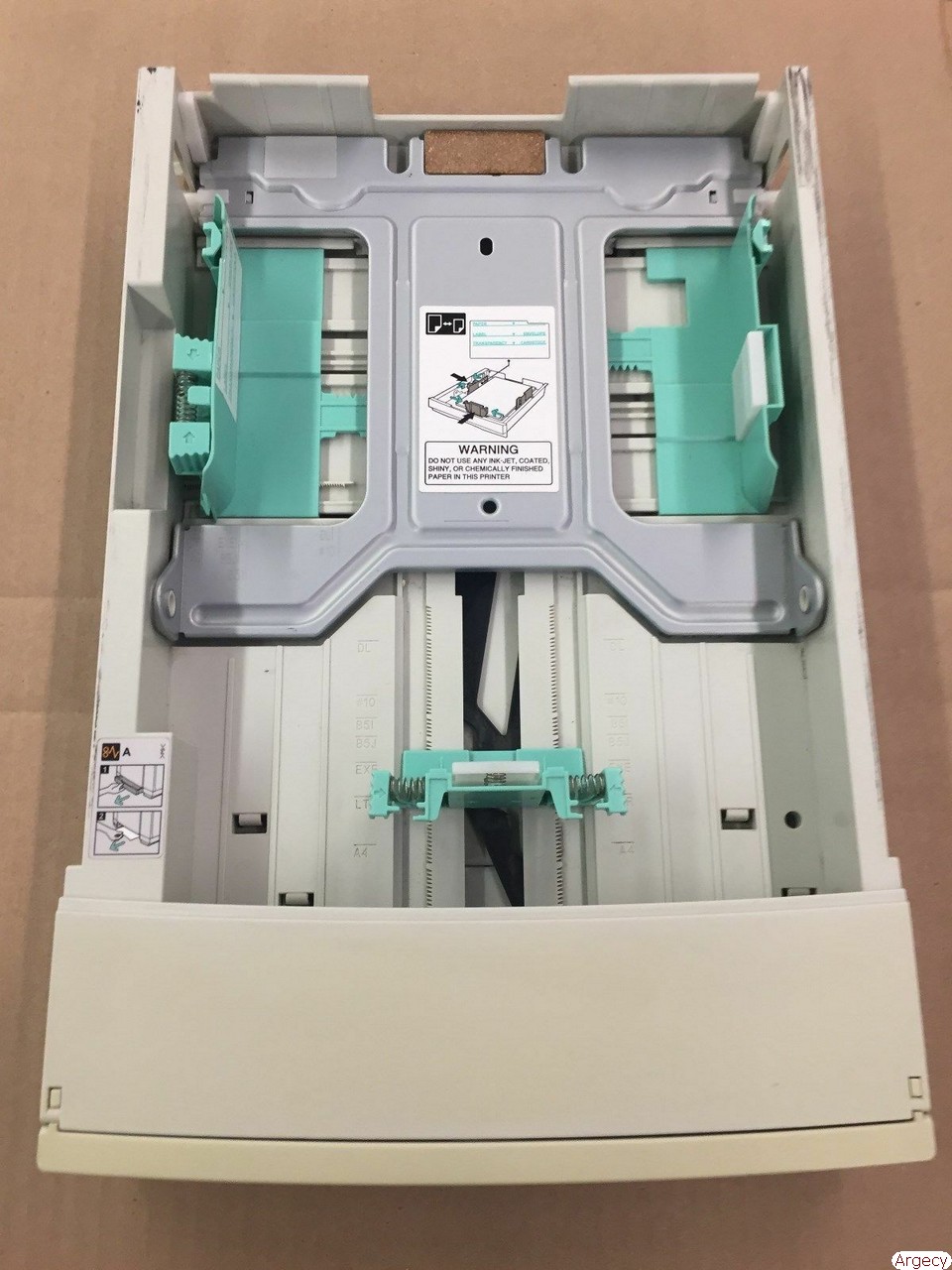 75P5419 250-Sheet Standard Tray | |
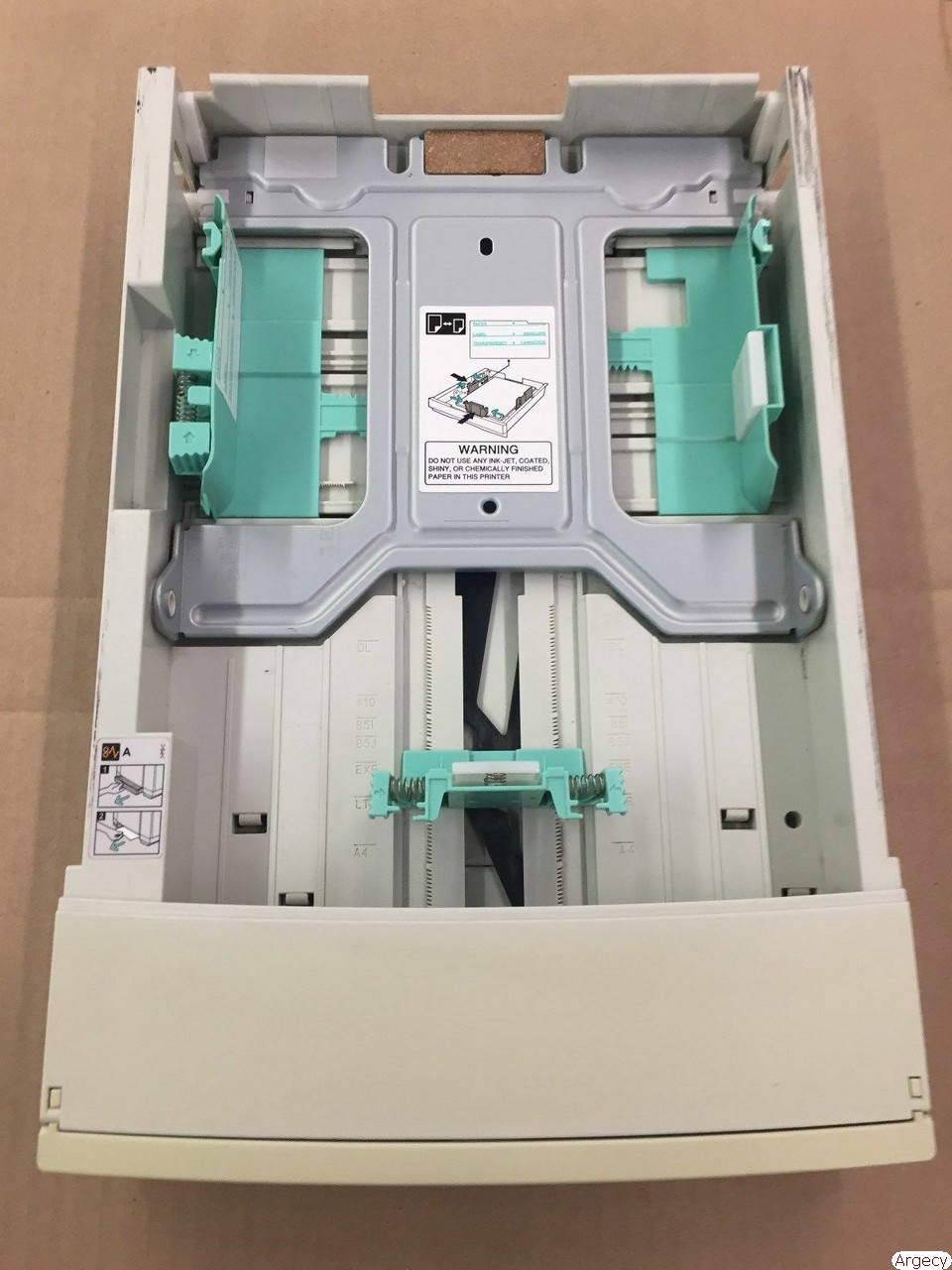 75P5420 250-Sheet Legal Tray | |
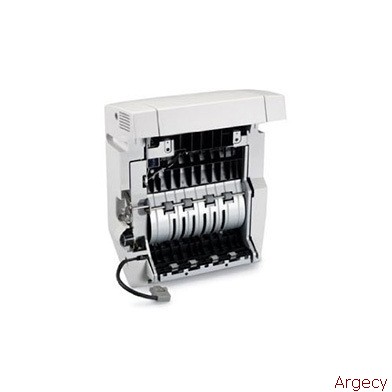 75P5421 Duplexer | |
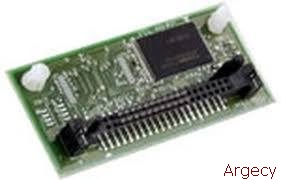 75P5424 ImageQuick Card | |
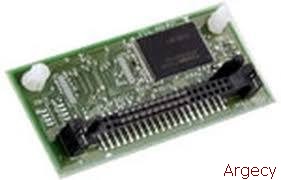 75P5425 Bar Code Card | |
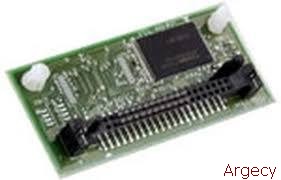 75P5426 Decryption Card | |
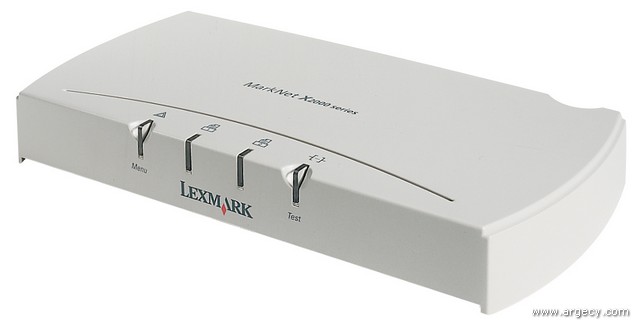 28p1836 Token Ring | |
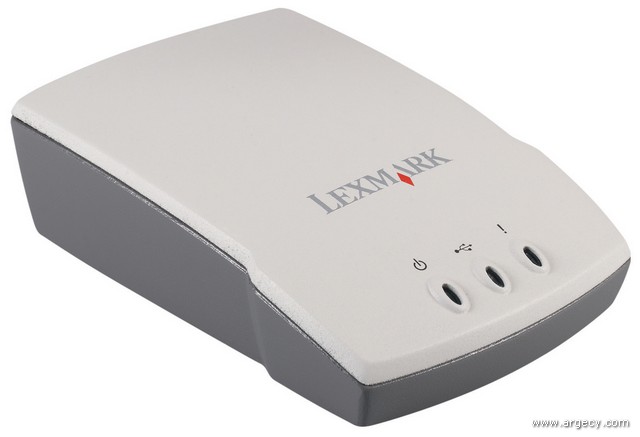 28p1839 Ethernet | |
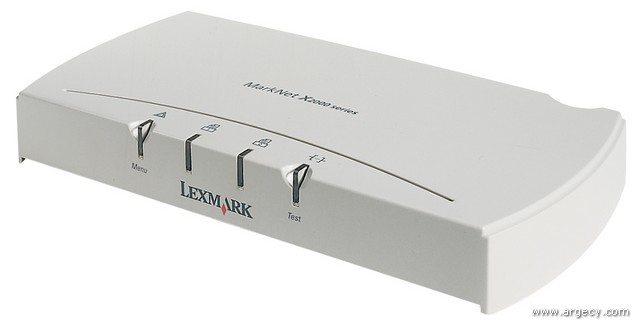 28p1840 Ethernet | |
| 28p1841 Ethernet | |
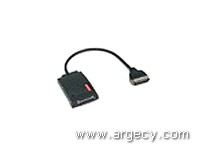 28p1845 Serial | |
| 28p1862 OptraForms | 28P1862 Optra Forms Software New 28P1862 (New) Retired, no longer available: Contact for alternatives |
| 28p1863 OptraForms | 28P1863 Optra Forms Director Software New 28P1863 (New) Retired, no longer available: Contact for alternatives |
| 28p1869 2-Key Security Option | |
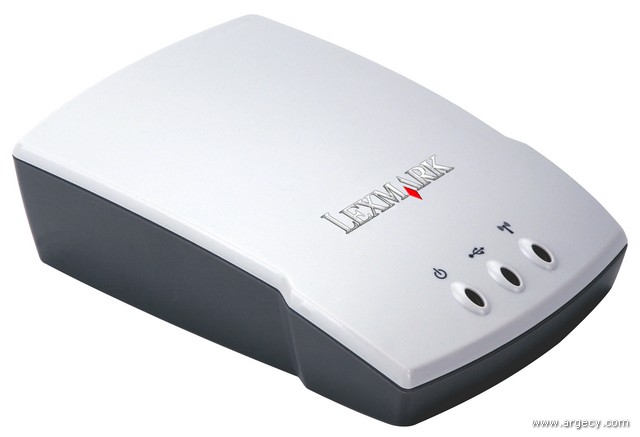 75P5449 USB to Ethernet Adapter | |
| 53P9307 Optra Forms Manager | |
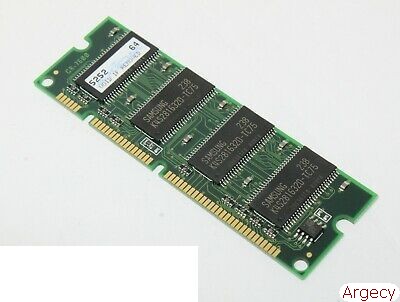 53p7604 64 MB | |
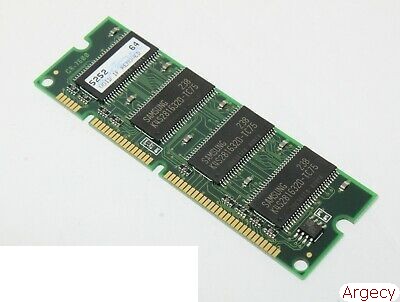 53p7605 128 MB | |
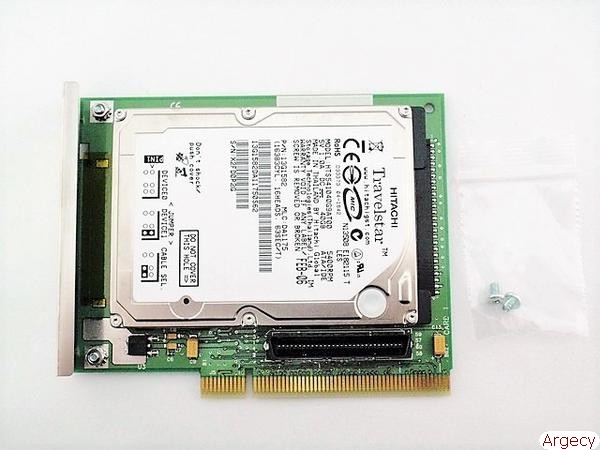 53P4692 20+GB ISP Hard Disk w/Adapter | |
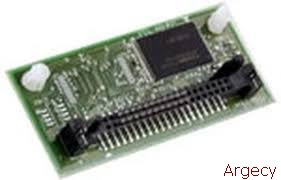 75p4690 16MB Flash | |
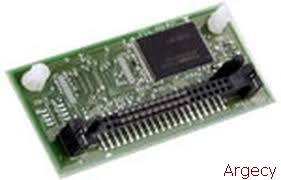 75P4691 32 MB Flash | |
| 75p4693 Optraforms Flash | 75P4693 Optra Forms 32MB Flash New 75P4693 (New) Retired, no longer available: Contact for alternatives |
| 75p4694 Optraforms Flash | |
| 75p4695 Optraforms HD | 75P4695 Optra Forms 20+GB Hard Disk New 75P4695 (New) Retired, no longer available: Contact for alternatives |
| 75p4696 Token Ring | 75p4696 Token Ring Card Fully refurbished with 90-day warranty 75P4696 Retired, no longer available: Contact for alternatives |
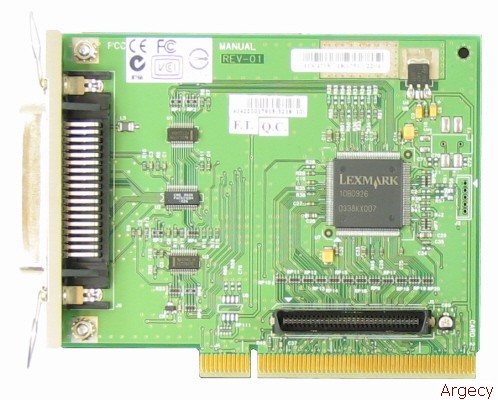 75p4707 Interface | |
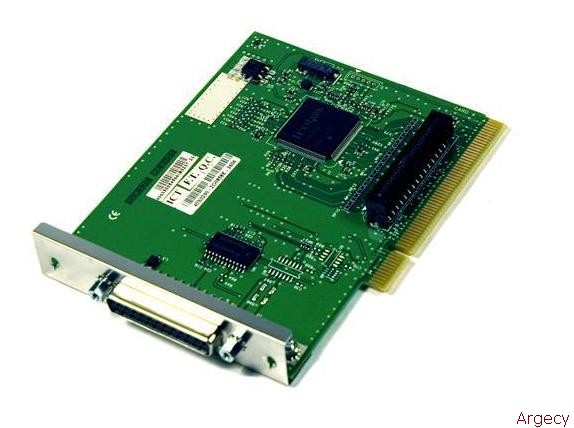 75p4706 Serial | |
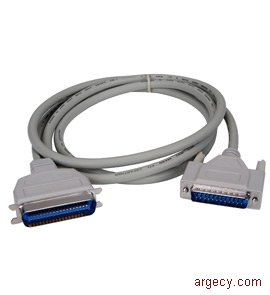 28p1871 Cable | |
| 28p1874 Serial 50 ft. Cable | |
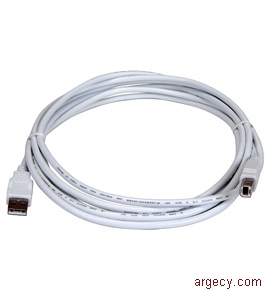 28p1875 USB cable | |
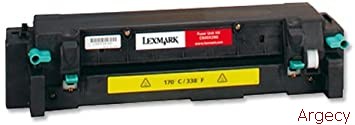 75P5433 110V Fuser | |
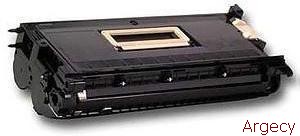 75P5474 Toner Cartridge, Cyan 3,000 | |
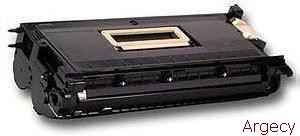 75P5475 Toner Cartridge, Magenta 3,000 | |
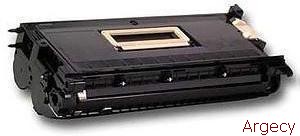 75P5476 Toner Cartridge, Yellow 3,000 | |
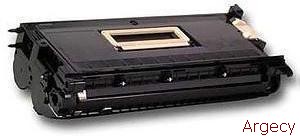 75P5477 Toner Cartridge, Black 5,000 | |
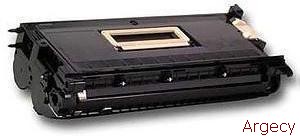 75P5427 High Yield Toner Cartridge, Cyan 6,600 | |
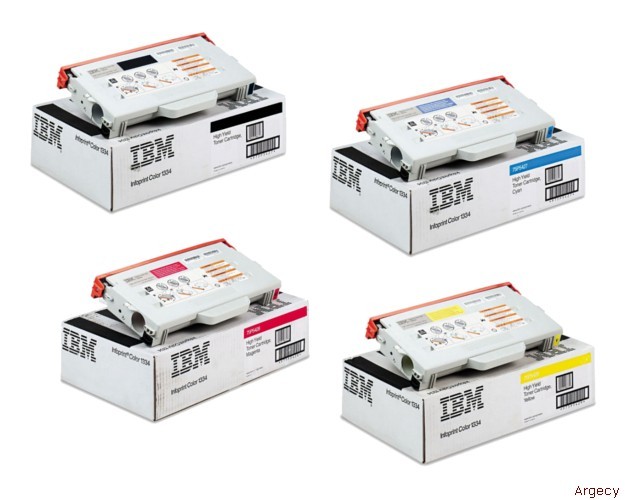 75P5428 High Yield Toner Cartridge, Magenta 6,600 | |
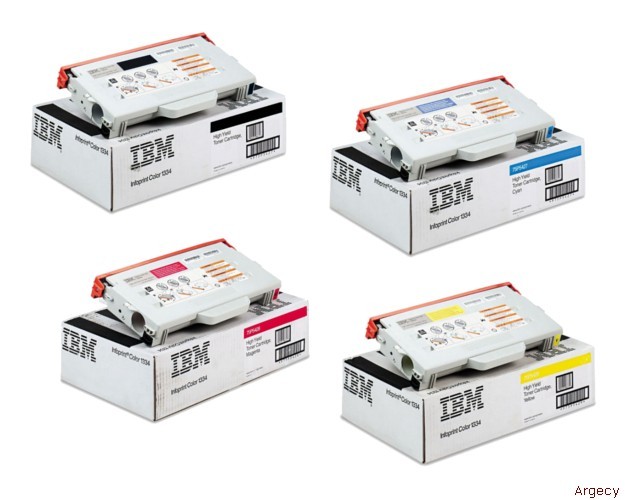 75P5429 High Yield Toner Cartridge, Yellow 6,600 | |
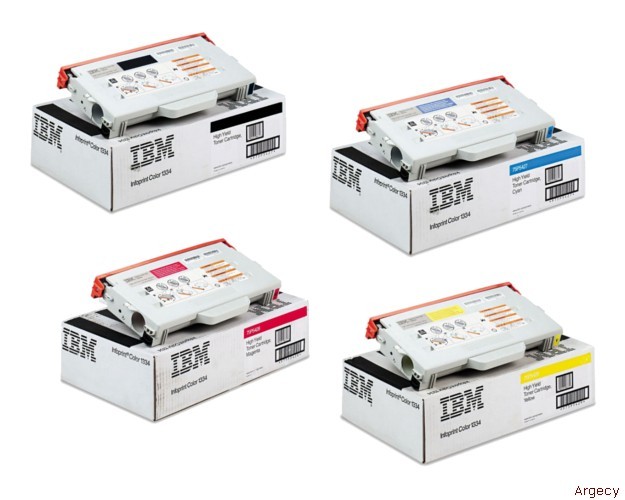 75P5430 High Yield Toner Cartridge, Black 10,000 | |
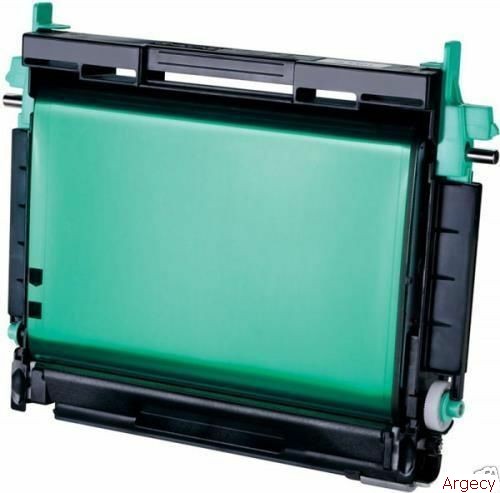 75P5438 Photodeveloper Cartridge 40,000 images | |
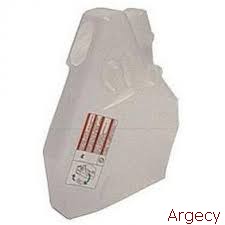 75P5431 Toner Waste Bottle 12,000 images | |
 75P5433 Fuser Unit (LV:120V) 51,000 | |
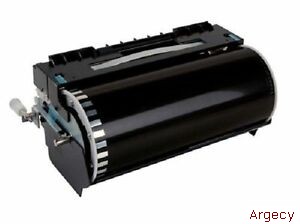 56P1651 Transfer Unit 120,000 | |
 56P1607 Cleaning Roller 120,000 | |
 56P1660 Transfer Roller 120,000 |
The IBM 4934 Infoprint Color 1334 printer is a low voltage network printer.
Highlights
IBM Infoprint Color 1334 offers fast monochrome printing along with color printing capability at a very affordable price. It provides up to 30 PPM(1) in monochrome and 8 PPM(1) in color, and is available in a network model only.
The Infoprint Color 1334:
- Comes with 128 MB of memory standard
- Offers 2400 Image Quality and 600 x 600 dpi resolution
- Provides color toner savings mode
- Standard Ethernet and optional Token-Ring connectivity
Note: (1) Exact print speed varies depending on document complexity, system configuration, software applications, driver, and printer status.
Description
The Infoprint Color 1334 provides:
- High-performance controller technology utilizing a 500 MHz RISC processor
- 128 MB of memory (320 MB maximum) standard
- First page out time as fast as 13.0 seconds for monochrome and as fast as 19.0 seconds for color(1)
- Color toner savings mode
- Standard Ethernet and optional Token-Ring available
- 2400 Image Quality and 600 x 600 dpi resolution
Note: (1) Exact print speed varies depending on document complexity, system configuration, software applications, driver, and printer status.
The IBM Infoprint Color 1334 is an A4/Letter multi-pass color laser printer with print speeds of up to 30 PPM(1) for monochrome and 8 PPM(1) for color.
Infoprint Color 1334 media handling capabilities include:
- One 250-sheet tray standard input capacity and 250-sheet output capacity
- One optional drawer for a maximum of 780 sheets input capacity
- Optional 250-sheet legal tray
- Optional duplex for two-sided printing
Usage rates
The maximum monthly usage is 35,000 impressions. IBM does not recommend printing to the monthly maximum on a consistent basis.
Infoprint Color 1334 Models
The Infoprint Color 1334 printer comes in a network model only.
The network model includes 10/100BaseTX Ethernet.
High-performance controller
The Infoprint Color 1334 controller features a 500 MHz PMC-Sierra RM7065C processor for all models. All models have a 100 MHz internal data bus and are equipped with robust data stream support with PostScript 3 emulation and PCL 6 emulation standard.
Memory
Network models come with 128 MB of memory. The controller supports a maximum of 320 MB of memory with 64 MB soldered onboard and two memory slots available. A maximum of 32 MB of optional flash memory is supported with one slot dedicated for flash memory.
Printer system attachment interfaces
A USB interface and an integrated 10/100BaseTX Fast Ethernet interface are standard on network models.
Optional features are available for other network connections.
There is one dedicated slot available for network connections and one dedicated slot available for firmware cards such as fonts cards and application solution cards.
Print Quality
The Infoprint Color 1334 supports following resolutions:
- 2400 Image Quality implemented on a 600 x 600 printer
- 600 x 600 dpi
The Toner Darkness setting offers you five selectable levels with level 5 being the darkest. This allows you to conserve toner by selecting the darkest settings only when needed. Level 4 is the default setting. When printing in color, level 5 is equal to level 4. The printer offers up to 50% toner savings to help reduce the cost of printing(1).
The Toner Darkness menu is available through the operator panel under the Print Quality menu and also accessible through the Infoprint Color 1334 PostScript Driver.
Note: (1) Toner yield is based on comparative testing (assume 5% print coverage) and is offered for planning purposes only, not a guarantee of minimum life.
Font support
The printer's resident fonts include support for following:
Emulation Number of scalable fonts Number of bitmapped fonts
------------ ------------------------ -------------------------
PCL 6 89 2
PostScript 3 158 0
PPDS 39 5
The Infoprint Color 1334 maximum print speeds are shown in the following table.
Factors affecting performance include:
- Interface to the host (serial, parallel, network)
- Host system and application
- Network complexity and traffic
- Page complexity and content
- Certain printer options installed and selected
- Printer memory
- Printer resolution
- Media size, media type setting and tray source
Letter 30 ppm 8 ppm 15 ppm 4 ppm
A4 30 ppm 8 ppm 15 ppm 4 ppm
Legal 16 ppm 8 ppm 5 ppm 4 ppm
Transparencies 3 ppm 2 ppm N/S N/S
Thick Cardstock 3 ppm 2 ppm N/S N/S
Labels (Letter & A4) 5 ppm 3 ppm N/S N/S
Medium Thick Cardstock 4 ppm 3 ppm N/S N/S
(Letter & A4)
Envelopes 5 ppm 3 ppm N/S N/S
Note: N/S = Not Supported.
Times to First Print are shown in the following table.
Simplex Duplex
Time to First Print Mono Color Mono Color
-------------------------- ------ ------ ------ ------
Time from Standby Mode 13 sec 19 sec 19 sec 27 sec
Time from Power Saver Mode 45 sec 45 sec 45 sec 45 sec
Note: Time to first page (TTFP) is defined to be the time from the moment when the host sends the print signal until the moment the trailing edge of the first page leaves the exit feed rollers. TTFP is measured using a simple text (single character) page and letter-size, plain paper. Time to first print does not include Pause functions nor printer controller processing time.
Note: Warm up time, 45 seconds maximum, is defined as the time elapsed from when the power is turned on to when the Ready status is reached.
Print Area
The Infoprint Color 1334 printable area is limited to within 4.0 mm(0.158 in.) of top, bottom and 3.0 mm (0.118 in.) of left, right edges of the media. Any information placed outside this specified printablearea will not print. For envelopes, the printable area is up to 4.0 mm (0.158 in.) of left, right edges and up to 3.0 mm (0.118 in.) of top,bottom edges.
Print Quality
General Statement on Print Quality
During the life of the printer, components are subject to wear basedon usage. Printers continuously operating at or near the maximum duty cycle may require service for replacement of these components to ensurehigh quality printing and good performance throughout the life of the printer.
Automatic Calibration
The Infoprint Color 1334 performs an automatic calibration under the following conditions: 1. at power on, 2. coming out of Power Saver mode, 3. whenever the front door is opened , 4. after changing a printcartridge, or 5. after changing a photodeveloper cartridge.
Driver
A choice to print a color job in black & white is available in Infoprint Color 1334 Drivers. Printing jobs in color is the default setting.
Print Mode
Allows users not utilizing an Infoprint Color 1334 Driver to print a color job in black & white by selecting Black & White from the menu. The selections are Color (default setting) and Black & White. "Print Mode" is located under the Color Menu. These Op panel selections are ignored when using an Infoprint Color 1334 PostScript or PCL Driver for Windows.
Black & White Lock
This feature allows Printer/Network Administrators to "lock" the Infoprint Color 1334 printer in a mode that will only print black & white with the ITU disengaged. This feature can not be overridden with any other menu or driver selection. "Black and White Lock" is located under the Configuration Menu.
Printer Statistics
Printer Statistics is a function in the printer that enables the collection and retrieval of printer usage information. The data can be retrieved in one of three ways:
- Hardcopy output
- The printer's internal web page
- Via MarkVision Professional (via NPA commands and alerts)
Page Count
Page counts are incremented every time a side on a page is imaged. For simplex pages, this value will be incremented by one and duplexpages will be incremented by two.
Jobs Printed
Jobs Printed will keep track of the number of jobs sent to each emulator. Some emulators in the printer are tracked individually, the rest will fall under the "Other" category. "Total" is the total number of jobs submitted to the printer.
Supplies
There are three categories for tracking the number of cartridges used by cartridge size. The first category indicates the cartridge size shipped with the printer, 1.5K. The second category will indicate the size cartridge first installed after the starter cartridge , 3.0K or 6.6K CMY, 5.0K or 10.0K Black. Any additional cartridge sizes will appear in the "Other" category. The Supplies field will only display the categories that have been initialized with a specific cartridge size.
Color Correction Settings
The Infoprint Color 1334 will offer the following color correction settings:
Paper Usage
Paper Usage tracks every page printed on every media type supported by the printer.
Dates
The date of install should be attempted to be read at every POR on a network machine whenever a valid date of install is NOT stored in the printer. Once a valid date of install is retrieved, it should never be overwritten. If a valid date of install is not available, then the Dates group will not be shown in the statistics section.
Auto (default)
Applies different color correction to each object on the printed page depending upon the type of object and how the color for each object is specified.
Off
No color correction is implemented.
Manual
Allows users to customize color correction output from the Op Panel. Setting selectable from the Driver.
"Auto/default" Color Correction Setting
Incoming Color Format Color Correction Output
--------------------- -----------------------
RGB Graphics sRGB Vivid
RGB Image sRGB Display
RGB Text sRGB Vivid
CMYK Graphics US CMYK
CMYK Image US CMYK
CMYK Text US CMYK
"Manual" Color Correction Output Op Panel Selections
Color Correction Output Selections
Incoming Color Format Default Other
--------------------- ------------ ----------------------------
RGB Graphics sRGB Vivid Vivid, sRGB Display, RGB Off
RGB Image sRGB Display sRGB Vivid, Vivid, RGB Off
RGB Text sRGB Vivid Vivid, SRGB Display, RGB Off
CMYK Graphics CMYK (1) Vivid CMYK, Vivid, CMYK Off
CMYK Image CMYK (1) Vivid CMYK, Vivid, CMYK Off
CMYK Text CMYK (1) Vivid CMYK, Vivid, CMYK Off
Note: (1) US CMYK is default for low volt printers, Euro CMYK is default for high volt printers
"Manual" Color Correction Output Selection Definitions
Vivid
Applies a color correction algorithm that produces brighter, more
saturated colors. May be selected for all incoming color formats.
sRGB Display
Applies color correction to produce output that approximates the colors displayed on a computer monitor.
sRGB Vivid
Increased color saturation for the sRGB Display color correction.
RGB Off
No color correction is implemented.
US CMYK
Applies color correction to approximate SWOP R color output.
Vivid CMYK
Increased color saturation for the US CMYK color correction.
CMYK Off
No color correction is implemented.
Euro CMYK
Applies color correction to approximate EuroScale color output.
Color Balance Control
The Infoprint Color 1334 will offer a Color Balance Control. It is a color correction option that allows the user to increase or decrease the amount of toner going to the page individually for the cyan, magenta, yellow and black color planes. The scale for the adjustmentsis +5 to -5.
Color Saver Mode
The Infoprint Color 1334 will offer a Color Saver Mode that allows end users to print images and graphics lighter. Text will print at Toner Darkness "4", while images and graphics print at Toner Darkness "1". The Color Saver Mode is located on the Op panel under the ColorMenu and may be selected from the Lexmark Custom PostScript Driver.
Coverage Estimator
The Coverage Estimator is designed to give the user an approximation of percent coverage per color when printing a composite color document. The estimation of coverage can be used to calculate an approximate cost
of any given document if yield and coverage are assumed to be linear and inversely related. This tool should allow customers to discover for themselves that printing color documents on color laser printers is frequently an economical way to create these documents. Furthermore, they can discover that many black and white documents can be improved for a nominal increase in cost.
The Coverage Estimator allows end users to estimate the percent coverage of cyan, magenta, yellow and black on a page. The estimates will be printed on the page. The Coverage Estimator is available fromthe Op Panel under the utility menu.
The Coverage Estimator utilizes an algorithm that counts pixels for each toner color: black, cyan, magenta and yellow. Once the utility is selected, the printer overlays the percent coverage on every printed page. The printed percentages are not included in the estimate. The utility can be turned off by deselecting it from the menu or by
powering off.
The Coverage Estimator is intended to only estimate the coverage on a given page. For all toner colors that are used, the minimum percentage reported will be two percent. Reported values may vary from printer to printer. The accuracy of the estimates may be affected by the fullness of the print cartridges, environmental conditions, media type, application, application settings, driver, driver settings, and the content of the page. Lexmark makes no claim as to the accuracy ofthe estimated percents.
Data Streams
The Infoprint Color 1334 supports the following data streams:
- PostScript Level 3 Emulation
- PCL 6 Emulation
Fonts
Fonts and Symbol Sets
There are 89 symbol sets in the PCL 6 emulation to support all the languages that use these characters. The symbol set names are listed below. Not all symbol sets are supported by all fonts. Refer to the Technical Reference manual or use the printer operator panel to findwhich symbol sets are supported by each font.
The Infoprint Color 1334 will have UTF-8 code support standard. UTF-8 code is a particular way in which fonts are accessed. UTF-8 code is a particular way in which fonts are accessed. UTF-8 is available for PCL and PostScript fonts.
The fonts in the PCL emulation are compatible with the fonts in the HP4500 (HP trademark) and include four additional fonts and many extra symbol sets to support extra languages and applications. The fonts in
the PostScript emulation are compatible with the 136 Adobe PostScript 3 and include 22 additional fonts.
Additional fonts can be downloaded to the printer RAM or optional Flash DIMM or Hard Disk. PCL emulation supports both scalable and bitmapped downloadable fonts. PostScript emulation supports only downloadable scalable fonts, and PPDS emulation supports only downloadable bitmapped fonts. Font cards and font cartridges are notsupported.
Included on the CD-ROM shipped with the printer are a variety of
downloadable fonts for Hebrew and Arabic and additional support for the
Euro currency character.
Also included on the CD-ROM is the FontVision Font Management utility and screen fonts to match the resident scalable fonts.
Media Support
All models come standard with one 250-sheet paper drawer. One 250-sheet output bin is standard. See tables below for standard andmaximum media capacities.
Input Media Capacities (sheets)
Total
Drawer 1 Drawer 2 Capacity
-------- -------- --------
Standard 250 250
Maximum 250 530 780
Output Media Capacities (sheets)
Standard Total
Output Bin Capacity
---------- --------
Standard 250 250
Media Sizes Supported
Input Media
Std 250-
250- Sheet 530-
Sheet Legal Sheet
Paper Size & Type Tray Tray Drawer Duplex
------------------------ ----- ----- ------ ------
A4 (210x297 mm) Yes Yes Yes Yes
Letter (8.5"x11"] Yes Yes Yes Yes
A5 (148x210 mm) Yes No No Yes
B5-JIS (182x257 mm) Yes Yes No Yes
Legal (8.5"x14"] No Yes No Yes
Executive (7.25"x10.5"] Yes Yes Yes Yes
Folio (8.5"x13"] Yes No No Yes
Statement (5.5"x8.5"] Yes No No Yes
Universal (1) Yes Yes No Yes
9 Env. (98x225 mm) Yes Yes No No
Commercial #10 Env. Yes Yes No No
(104.8x241.3 mm)
DL Env. (110x220 mm) Yes Yes No No
C5 Env. (169x229 mm) Yes Yes No No
B5 Env. (176x250 mm) Yes Yes No No
Note: (1) Select Universal when using a non-standard size sheet of print material. The printer formats the page for the maximum size 8.5 x 14 in. (215.9 x 355.6 mm).
Output Media
Std
Out.
Paper Size & Type Bin
----------------------- ----
A4 (210x297 mm) Yes
Letter (8.5"x11"] Yes
A5 (148x210 mm) Yes
B5-JIS (182x257 mm) Yes
Legal (8.5"x14"] Yes
Executive (7.25"x10.5"] Yes
Folio (8.5"x13"] Yes
Statement (5.5"x8.5"] Yes
Universal (1) Yes
9 Env. (98x225 mm) Yes
Commercial #10 Env. Yes
(104.8x241.3 mm)
DL Env. (110x220 mm) Yes
C5 Env. (169x229 mm) Yes
B5 Env. (176x250 mm) Yes
Media Type and Weights Supported
Input Media
Print Media Standard Tray 530-Sheet Drwr Duplex
------------------ ------------- -------------- -----------
Copier/Xerographic 75-120 gsm 75-120 gsm 75-120 gsm
20-32 lb 20-32 lb 20-32 lb
Card Stock Normal 163 gsm N/S N/S
90 lb
Card Stock Heavy 164-210 gsm N/S N/S
91-110 lb
Envelopes 75-90 gsm N/S N/S
20-24 lb
Note: N/S = Not Supported.
Additional Media Guidelines
Follow the media guidelines below for successful printing:
Paper
Rough, highly textured, limp, or pre-curled papers will result in lower print quality and more frequent paper feed failures.
Colored papers must be able to withstand 190 deg C (400 deg F) fusing temperature.
Preprinted forms and letterheads should be selected using guidelines found in the printer User's Guide. The chemical process used in preprinting may render some papers unsuitable for use with the Infoprint Color 1334.
Unsuitable papers include multipart forms and documents; chemically treated papers; coated, synthetic and thermal papers; and preprintedpapers requiring a high degree of registration.
Recycled paper less than 80g/sqm may cause unacceptable results.
Envelopes
All envelopes should be new, unused, and without package damage.
Envelopes with excessive curl or twist exceeding 6 mm, those stuck together, those with bent corners or nicked edges, or those thatinterlock should not be used.
Minimum weight: 90 g/m2 (24 lb.)
The following envelopes should not be used:
- Envelopes with windows, holes, perforations, cutouts, or deep embossing.
- Envelopes with metal clasps, string ties, or metal folding bars.
- Envelopes with exposed flap adhesive when the flap is in the closed position.
- For best results, printing on new 90 g/m2 (24 lb.) sulfite or 25% cotton bond envelopes is recommended.
- Under high humidity conditions (over 60%), envelopes may seal during printing.
Transparencies
Use letter or A4-size sheets only.
Transparencies specifically designed for xerographic copy machines or laser printers may be used with the Infoprint Color 1334.
Labels
Labels should be selected using guidelines found in the User's Reference, Complete Printer Reference, and tested for acceptability.
Paper Sensing
The Infoprint Color 1334 printer has the following paper sensors:
Paper Paper Tray Bin
Sensing Function Size Out Present Full
-------------------- ----- ----- ------- ----
Input
Integrated 250-sheet Yes Yes Yes
Optional 530-sheet Yes Yes Yes
Output
Standard 250-sheet Yes
802.11g Wireless to Ethernet
Specifications
Model ACR-201-G
Standard IEEE 802.11g, 802.11g WPA-TKIP, WPA-PSK
Host Interface Ethernet, 802.3, RJ-45 receptacle
Frequency 2.4835 GHz (US and Europe)
RF Channels 11 channels (US, Canada)
13 channels (Europe, except France)
4 channels (France)
Transmission power 14 dBm at antenna input typical for 802.11g
16.2 dBm at antenna input typical for 802.11b
Receiver sensitivity -65dBm @ 54Mbps, -80sBm @11Mbps at 1e-5 BER Typical
Antenna Dipole antenna with ~2dBi gain
Data Rate 1/ 2/ 5.5/ 6/ 9/ 11/ 12/ 18/ 24/ 36/ 48/ 54 Mbps
Modulation OFDM with BPSK, QPSK, 16QAM, 64QAM (11g) DBPSK, DQPSK, CCK (11b)
Link Distance ~1200 ft in open space
Network Types Support both the ad hoc mode and the infrastructure mode
Data Encryption Support WPA-TKIP, WPA-PSK and 128/64-bit WEP
LED Indicators 4: Power, Transmission, Receiving, Link/Ethernet-connection
Network Protocol TCP/IP, IPX/SPX, AppleTalk Support
Printer Management Utilities
MarkVision Professional (provided on the printer CDs)
MarkVision Professional is a cross-platform print management solution that enables IT administrators to proactively monitor and manage network devices in an enterprise environment via a web browser. It provides IT administrators with real time device status andinformation, centralized device setup, remote printer monitoring and management, and asset management capabilities.
The 802.11g Wireless to Ethernet acts as a wireless Ethernet bridge. When used with a Lexmark printer that supports MarkVision Professional management capabilities, the wireless bridge provides the same level of
functionality as if the printer were connected to the network via a wired connection.
MFP Information / Compatibility
When used with a network-capable MFP, the 802.11g Wireless to Ethernet provides network capabilities equivalent to a MFP connected to a wired 10/100BaseTX Ethernet network.
Network Security
The 802.11g wireless to Ethernet supports the following wireless security methods and protocols:
WPA-Personal-level security:
- TKIP
- Pre-Shared Key (PSK)
WEP:
- 64-bit
- 128-bit
These security modes cannot be used in combination. For example, if a user selects WPA-personal, the user cannot enable WEP securityfeatures.
In addition to the wireless security methods, the 802.11g Wireless to Ethernet included with the printer or MFP provides the following access control methods that an be used in conjunction with any wireless security methods stated above:
Device configuration password protection
Restricted Server List
Operating System Support
Workstation Operating Systems:
- Apple Mac OS 8.6-9.x (LPR printing)
- Apple Mac OS X.2 and above (Zero Configuration support)
- Windows 98SE, Me
- Windows NT 4.0(1)
- Windows 2000
- Windows XP
- Red Hat Linux 7.3, 8.0, 9.0(1)
- SuSE Linux 8.0, 8.1, 8.2(1)
Server Operating Systems:
- Apple Mac OS X.2 Server and above
- Windows NT 4.0 Server(1)
- Windows 2000 Terminal Server
- Windows 2000 Server, Advanced Server
- Windows Server 2003
- IBM iSeries or IBM AS/400 Systems with TCP/IP with OS/400? V3R1 or later using OS/400 Host Print Transform(1)
- Virtually any platform supporting TCP/IP(1)
- Microsoft Windows 2000 Server Terminal Services, with Citrix MetaFrame 1.8 or XP 1.0
- Microsoft Windows NT 4.0 Terminal Server, with Citrix MetaFrame 1.8 or XP 1.0(1)
- Novell NetWare 5.x/6.x NDPS 2.0 and iPrint(1)
- Red Hat Linux 7.3, 8.0, 9.0(1)
- SuSE Linux 8.0, 8.1, 8.2(1)
Note: (1) May require initial configuration through Ad-hoc mode.
Printing Protocols
The 802.11g Wireless to Ethernet feature is compatible with all network protocols supported by the printer.
802.11g Wireless to USB
Network Security
The 802.11g wireless to USB supports the following wireless security methods and protocols:
WPA-Personal:
- TKIP
- Pre-Shared Key (PSK)
WEP:
- 64-bit
- 128-bit
These security modes cannot be used in combination. For example, if a user selects WEP, the WPA-Personal cannot be enabled. In addition to the wireless security methods, the print server provides the following access control methods:
Device configuration password protection
Restricted Server List
Operating System Support
Workstation Operating Systems:
- Apple Mac OS 8.6, 9.x (LPR printing)
- Apple Mac OS X 10.2 and above (Zero Configuration support)
- Windows 98SE, Me
- Windows NT 4.0(2)
- Windows 2000
- Windows XP
- Red Hat Linux 7.3, 8.0, 9.0(2)
- SuSE Linux 8.0, 8.1, 8.2(2)
Server Operating Systems:
- Apple Mac OS X.2 Server and above
- Windows NT 4.0 Server(2)
- Windows 2000 Terminal Server
- Windows 2000 Server, Advanced Server
- Windows Server 2003
- IBM iSeries or IBM AS/400 Systems with TCP/IP with OS/400? V3R1 or later using OS/400 Host Print Transform(2)
- Virtually any platform supporting TCP/IP(2)
- Microsoft Windows 2000 Server Terminal Services, with Citrix MetaFrame 1.8 or XP 1.0
- Microsoft Windows NT 4.0 Terminal Server, with Citrix MetaFrame 1.8 or XP 1.0(2)
- Novell NetWare 5.x/6.x NDPS 2.0 and iPrint(2)
- Red Hat Linux 7.3, 8.0, 9.0(2)
- SuSE Linux 8.0, 8.1, 8.2(2)
Note: (2) May require initial configuration through Ad-hoc mode.
Printing Protocols
The following print protocols are supported:
- Direct IP (TCP 9100)
- LPR/LPD (TCP 515)
- IPP (Internet Printing Protocol) (TCP 631 or TCP 80)
- HBN (Host Based Networking)
Address Management Protocols
The following address management protocols are supported:
- Auto-IP
- DHCP
- DDNS
- mDNS
- ARP
- WINS
Device Management Protocols
The following device management protocols are supported:
- Zero Configuration
- HTTP
- ICMP
- SNMP
- HCP Host Configuration Protocol
- Telnet 9000
File Transfer Protocols
The following file transfer protocols are supported:
- FTP (printing, UCF file configuration)
- TFTP (printing, code updating)
IPDS is not supported through the USB port.
Network Management
These features provide management capabilities primarily via its embedded web server. Basic network management is also provided usingtraditional TCP/IP functions.
Basic Management
The following basic management applications are supported:
- Ping
- Finger
- Telnet 9000
- Discovery Utility
Advanced Management
These features are designed to allow the user to learn network status and configure network settings remotely. The printer serversupport the following management methods:
- Embedded Web Server
- SNMP
- Universal Configuration Files (UCF)
Embedded Web Server Function
Supported Web Browsers
Microsoft Internet Explorer 5.0, 6.0 and newer
Netscape 4.0, 7.0 and newer
Safari 1.0 and newer
Primary Web Server Functions
The following items are available regardless of the status of the USB-attached device:
- Name and picture of print server
- Wireless status (connect speed, signal strength, Access Point)
- Print Server Setup Page
- Configuration of all general adapter settings (LAA, Contact Name, Locations, Etc.)
- Configuration of all TCP/IP settings
- Configuration of password
- Links and Index section
- Link to Troubleshooting
- Applet to flash update
Physical Specifications
Dimensions
Width Depth Height Weight(1)
Network --------- --------- --------- ---------
Printer 495.0 mm 420.0 mm 385.0 mm 30.3 kg
(19.5 in) (16.5 in) (15.2 in) (67 lb)
Note: (1) Weights for low voltage and high voltage modes are the same.
Recommended clearances
Left Right Front Back Top
Network ------ ------- ------- ------- -------
Printer 203 mm 508 mm 711 mm 254 mm 584 mm
(8 in) (20 in) (28 in) (10 in) (23 in)
Operating Environment
Operating Temperature: 10.0 degrees C to 32.5 degrees C (50 degrees F to 90.5 degrees F)
Powered Off Temperature: 5.0 degrees C to 35.0 degrees C (41 degrees F to 95 degrees F)
Relative Humidity: 15% to 80%
Altitude: 2,500 meters (8,200 ft)
Ship/Storage Printer & Supplies Temperature: 0.0 degrees C to 35.0 degrees C (32 degrees F to 95.0 degrees F)
Relative Humidity: 10% to 90%
Atmospheric Pressure: 613 to 16057 hPa (460 to 800 mm Hg)
Electrical specifications
Low voltage models
110 - 127 V ac at 50 to 60 +/-3 Hz nominal
90 - 137 V ac extreme
High voltage models
220 - 240 V ac at 50/60 +/-3 Hz nominal
180 - 264 V ac extreme
Power Consumption
Printing states 1334 n
----------------------------- ---------
Average power while printing
- Continuous Mono 550 watts
- Continuous Color 370 watts
Power consumption at standby
- Power Saver ON 13 watts
- Power Saver OFF 150 watts
Maximum current while printing
- 110 Volts 7.2 amps
- 220 Volts 2.8 amps
Average current while printing
- 110 Volts 5.6 amps
- 220 Volts 3.0 amps
Note: All models are Energy Star compliant.
Acoustics
All measurements were made in accordance with ISO 7779 and reported in conformance with ISO 9296.
Base and network models:
Sound Sound
Mode Pressure dBA Power Level Bels
---------------- ------------ ----------------
Printing (color) 53 dBa 6.7
Idle (Standby) 41 dBa 5.6
Software
MarkVision Professional and printer drivers are provided on the Drivers, MarkVision, and Utilities CD that is packaged with the printer. See Publications section for details. MarkVision Professional for Sun Solaris, SuSE Linux, Red Hat Linux, HP-UX and IBM AIX operating systems are available from the IBM Web site.
The Windows software applications, which operate in the operating systems listed above, are best suited to run with the drivers supplied with the printer. These drivers for Windows take advantage of your printer functions and increase the printer performance whereverpossible.
Operating Systems
Infoprint Color 1334 is compatible with applications running under the following operating systems for either local or network connections: For information about USB connections, see LocalConnections.
Apple Macintosh
Mac OS 8.6, 9.x, OS X
Microsoft Windows
Microsoft Windows 95 4.00950 or later
Microsoft Windows 98, 2nd Edition
Windows Me
Microsoft Windows NT 4.00
Microsoft Windows NT 4.00 Server
Microsoft Windows 2000 Professional
Microsoft Windows 2000 Server
Microsoft Windows 2000 Advanced Server
Microsoft Windows XP Home
Microsoft Windows XP Professional
Microsoft Windows Server 2003
Note: Download the latest printer drivers from the IBM Web site.
Novell
Novell NetWare** 3.x, 4.x, 5.x, 6.x including full DNS and NDPS support
Novel** Distributed Print ServicesTM (NDPSTM) 2.0 or later with IBM NDPS IP Gateway.
Novel NetWare Enterprise Print Services (NES) with IBM NDPS IP Gateway.
Linux
SuSE 7.2, 7.3, 8.0
Red Hat Linux 7.2, 7.3, 8.0
Note: Download the Enhanced Printer Drivers from the IBM Web site.
UNIX
IBM AIX 4.2.1, 4.3.3, 5.1, 5.2
Compaq Tru64 UNIX 4.0F, 5.1
Compaq (Digital) UNIX 4.0D
HP-UX 10.20, 11.0, 11i
IBM AIX 4.2.1 or higher
SCO OpenServer 5.0.4, 5.0.5, 5.0.6
SCO Unixware 2.1.3, 7.1, 7.1.1
SGI IRIX 6.5x
Sun Solaris SPARC 7, 8, 9
Sun Solaris x86 7, 8, 9
Note: Download the Enhanced Printer Drivers from the IBM Web site.
Other
Virtually any platform supporting TCP/IP
IBM iSeries Systems with TCP/IP with OS/400(r) V5R1 or later using OS400 Host Print Transform.
The software applications that operate with most Apple LaserWriter printers will generally operate with the Infoprint Color 1334. TheMacintosh 128, 512, and 512e Computers are not supported.
Management Solutions (MarkVision**)
MarkVision Professional, MarkVision Messenger, NetPnP and Software Installation and Distribution tools are provided on Drivers, MarkVision and Utilities CDs.
MarkVision Professional
MarkVision Professional is a cross-platform print management solution that enables IT administrators to proactively monitor and manage network devises in an enterprise environment via a web browser.
It provides IT administrators with realtime device status and information, centralized device setup, remote printer monitoring and management, and asset management capabilities.
MarkVision Messenger
MarkVision Messenger provides real-time notification of printer conditions via e-mail, paging, or other applications and facilitates automated responses to these conditions before they become critical and
disruptive to user productivity. MarkVision Messenger enhances administrators' quality for service and improves end-user productivity and satisfaction.
NetPnP (provided on CD)
NetPnP senses when a new IBM printer is attached to the network and automatically creates a shared printer object on the Windows NT 4.0 or Windows 2000 system. Furthermore, NetPnP notifies end-users via e-mail
that the new network printer is available for printing. Designed for Windows NT 4.0 and Windows 2000 environments, Net PnP makes the Infoprint Color 1334 printers available to end-users within seconds of
network attachment.
Software Installation and Distribution tools (provided on CD)
In Windows NT 4.0 and Windows 2000 environments, these tools enable administrators to push printer software installation to other Windows NT 4.0 or Windows 2000 workstations or to write a script that will
install specified printer software on specified Windows NT 4.0 or Windows 2000 workstations on the network. In Windows 9X environments, it enables administrators to write installation scripts that can then
be distributed to other workstations. When executed, these scripts will silently install all specified IBM software.
Solaris Ready for Sun customers
These printers are certified Solaris Ready by Sun and include Infoprint Color 1334 Enhanced Printer Drivers for Sun Systems and Sun specific documentation seamless installation and use in Sun Solaris environments. The IBM network printers are Ethernet-ready for use inSun networks.
The IBM printers with USB interfaces are certified for USB attachment to Sun Blade workstations and Sun Ray appliances. MarkVision Professional is available from the IBM Web site.
IBM Infoprint Manager
Infoprint Manager support: Yes (post GA). Requires administrators to create printer objects.
Network Printer Resource Utility (NPRU)
NPRU will not support the Infoprint Color 1334
TCP/IP Network Port Monitor Utility
This utility will not support the Infoprint Color 1334
LPR Remote Printing Client Utility
This utility will not support the Infoprint Color 1334
Special Feature Codes -- Chargeable
Mach Feature Part
Type Model Number Number Description UPC
---- ----- ------- ------- ------------------------------ ---------------
4934 n01 75P5360 Infoprint Color 1334 n NA (LV) 0-00435-08612-9
75P5417 530-Sheet Drawer 0-00435-08661-7
75P5420 250-Sheet Legal Tray 0-00435-08664-8
75P5421 Duplex Unit 0-00435-08665-5
75P5424 ImageQuick Card 0-00435-08668-6
75P5425 Bar Code Card 0-00435-08669-3
75P5426 Decryption Card 0-00435-08670-9
75P5418 530-Sheet Tray 0-00435-08662-4
75P5419 250-Sheet Standard Tray 0-00435-08663-1
Printer Features
All printer features are customer installable.
Note: FC = feature code.
Input, Output and Other Media Features
(#4501, P/N 75P5417) 530-Sheet Drawer
Minimum required = 0, maximum allowed = 1
Prerequisite = none, Co-requisite = none
This input option can be installed beneath the printer to offer an added input source which holds approximately 530 sheets of 20 lb.paper.
(#4502, P/N 75P5418) 530-Sheet Tray
Minimum required = 0, maximum allowed = no maximum
Prerequisite = none, Co-requisite = none
This tray fits into the 530-sheet drawer. A customer can use these extra trays to hold an alternate media, such as letterhead, and temporarily replace a tray with standard media as needed. This versionof the tray holds approximately 530 sheets of (20 lb.) paper.
(#4503, P/N 75P5419) 250-Sheet Standard Tray
Minimum required = 0, maximum allowed = no maximum
Prerequisite = none, Co-requisite = none
This tray fits into the 250-sheet standard drawer. A customer can us these extra trays to hold an alternate media, such as letterhead, and temporarily replace a tray with standard media as needed. This version
of the tray holds approximately 250 sheets of A4/letter (20 lb.) paper.
(#4504, P/N 75P5420) 250-Sheet Legal Tray
Minimum required = 0, maximum allowed = no maximum
Prerequisite = none, Co-requisite = none
This tray fits into the 250-sheet standard drawer. This version of the tray holds approximately 250 sheets of legal (8.5 x 14 in., 215.9 x 355.6 mm) paper.
(#4402, P/N 75P5421) Duplex Unit
Minimum required = 0, maximum allowed = 1
Prerequisite = none, Co-requisite = none
This option offers two-sided printing capability.
Memory and Flash Memory Features
The Infoprint Color 1334 has two slots for memory and one slot for flash memory features. A maximum of 320 MB of memory and 32 MB of flash memory is supported.
The printer can support an optional hard disk with adapter feature that plugs into the interface card slot.
The memory features for the printer include:
(#4364, P/N 53P7604) 64 MB Memory DIMM
Minimum required = 0, maximum allowed = 1
Prerequisite = none, Co-requisite = none
(#4390, P/N 53P7605) 128 MB Memory DIMM
Minimum required = 0, maximum allowed = 2
Prerequisite = none, Co-requisite = none
(#4036, P/N 
75p4690) 16 MB Flash DIMM
Minimum required = 0, maximum allowed = 1
Prerequisite = none, Co-requisite = none
(#4038, P/N 75P4691) 32 MB Flash DIMM
Minimum required = 0, maximum allowed = 1
Prerequisite = none, Co-requisite = none
If larger storage is required, an optional hard disk feature is also available.
(#4329, P/N 75P4692) 20+GB Hard Disk with Adapter
Minimum required = 0, maximum allowed = 1
Prerequisite = none, Co-requisite = none
Conflict = This feature is mutually exclusive with the Optra Forms 5+GB Hard Disk with Adapter (#4877).
The hard disk with adapter feature is required for a hard disk support. The adapter plugs into a disk interface slot and does not take up a memory or interface slot.
Local Connections
Internal Local Connection Features
In addition to the standard USB port, each Infoprint Color 1334 model has one interface slot that can be used for optional networkconnections or local connections.
The following local connection options are supported:
(#4138) RS 232/422C Serial Interface Card
Minimum required = 0, maximum allowed = 1
Prerequisite = none, Co-requisite = none
This card provides an RS 232-C serial port and 1284-C parallel port.
(#4132, P/N 28P1845) External Serial Adapter
Minimum required = 0, maximum allowed = 1
Prerequisite = base printer model (002) or RS 232/422C Serial interface card (FC 4138), Co-requisite = none
This adapter is installed on the printer's parallel port and receives its power through the parallel port. It utilizes a standard 25-pin D-shell females connector and supports baud rates up to 19,200bps for RS-232C or 38,400 bps for RS-422.
(#4139, P/N 75P4707) Parallel 1284-B Interface Card
Minimum required = 0, maximum allowed = no maximum
Prerequisite = none, Co-requisite = none
This adapter allows an RS-232C Serial/Parallel port with a type C connector (1284-C) to accept a cable with a type B connector (1284-B).
Cable Features
(#4180, P/N 28P1871) 10 Ft. Parallel Cable
Minimum required = 0, maximum allowed = no maximum
Prerequisite = none, Co-requisite = none
For parallel attachment, this cable is recommended for ten feet or less and must be ordered separately.
(#4183, P/N 28P1874) 50 Ft. Serial Cable
Minimum required = 0, maximum allowed = no maximum
Prerequisite = none, Co-requisite = none
For serial attachment, this cable is recommended for fifty feet or less and must be ordered separately.
(#4184, P/N 28P1875) 2-meter USB Cable
Minimum required = 0, maximum allowed = no maximum
Prerequisite = none, Co-requisite = none
For USB attachment, this USB cable is recommended and must be ordered separately.
IBM iSeries
For serial attachment to the IBM AS/400 ASCII Workstation Controller, refer to the IBM AS/400 ASCII Workstation Reference and Example manual (SA41-9922) for specific cable information.
Network Connection Features
Network Cards for Internal Print Server Features
Network cards plug into the one interface slot. Only one card is allowed per network protocol so this printer can only have an internalthe 10Base/2 Ethernet which will disable the onboard Ethernet.
Infoprint Color 1334 come standard with Fast Ethernet 10/100BaseTx built-in to the controller board. Additionally, Infoprint Color 1334supports the following MarkNet** N2000 Series Internal Print Servers:
(#4120, P/N 75P4696) Token Ring attachment
Minimum required = 0, maximum allowed = 1
Prerequisite = none, Co-requisite = none
(#4165, P/N 28P1841) Ethernet 10/100BaseTX/10Base2
Minimum required = 0, maximum allowed = 1
Prerequisite = none, Co-requisite = none
This feature supports 10Base2 (coax) Ethernet and disables the onboard Ethernet.
Network Cards for External Print Servers Features
The following features provide MarkNet X2000 Series external network connection:
(#4163, P/N 28P1839) Ethernet 10BaseT/100BaseTX-1 port
Minimum required = 0, maximum allowed = 1
Prerequisite = none, Co-requisite = none
(#4165, P/N 28P1841) Ethernet 10/100BaseTX/10Base2-1 port
Minimum required = 0, maximum allowed = 1
Prerequisite = none, Co-requisite = none
(#4164) Ethernet 10BaseT/100BaseTX-3 port
Minimum required = 0, maximum allowed = 1
Prerequisite = none, Co-requisite = none
(#4121, P/N 28P1836) Token Ring-3 port
Minimum required = 0, maximum allowed = 1
Prerequisite = none, Co-requisite = none
(#4170) 802.11b Wireless Adapter
Minimum required = 0, maximum allowed = 1
Prerequisite = none, Co-requisite = none
This adapter allows the printer to connect to a wireless LAN based
on the IEEE 802.11b specification. It connects to the Ethernet
attachment.
(#4171) USB to Ethernet Adapter
Minimum required = 0, maximum allowed = 1
Prerequisite = none, Co-requisite = none
This adapter attachs to the printer's USB port and has one 10/100BaseTX port (RJ-45).
MarkNet** Compatibility
The Ethernet and Token-Ring print servers and standard Ethernet connections support the following protocols:
TCP/IP
Novell (IPX/SPX including NetWare Directory Services)
AppleTalk**
LexLink** (DLC/LLC)
The TCP/IP standard set of application services including DHCP, WINS, SNMP (industry standard printer MIB), http, lpr/lpd, ftp, tftp, ping, finger, telnet, bootp and rarp. The following protocols are alsosupported:
IPP: Internet Printing Protocol
SLP: Service Location Protocol
NTP: Network Timing Protocol
The printer with standard Ethernet MarkNet N2000 Series internal print servers and the MarkNet X2000 Series external print servers support a Resident Web page with Microsoft Internet Explorer 4.0 or later and Netscape Navigator 4.5 or later for Windows 95/98, WindowsMe, Windows 2000 or Windows NT.
The remote operator panel is available from MarkNet N2000 internal print servers or MarkNet X2000 external print servers.
Optra Forms Features
(#4871) Optra Forms Software Feature
Minimum required = 0, maximum allowed = 1
Prerequisite = none, Co-requisite = Optra Forms flash (FC 4876, FC 4881) or Optra 20 + GB Hard Disk with Adapter (FC 4877)
Optra Forms uses 'up-to-the-minute' data directly from customer applications and combines it with printer resident electronic forms with text and graphics to produce (print) completed forms such as
invoices, statements, pick slips, labels, purchase orders or confirmations with bar codes or other specialized graphics on a variety of paper types. For Optra Forms:
For Optra Forms:
No Server-based or host based merge program or software is required.
Use with virtually any ASCII text print file from any platform, mainframe, iSeries, UNIX or workstation, over Coax, Twinax, parallel, serial or LAN (TCP/IP).
Generally, make no changes to database applications.
Print different forms at different locations from the same database, possibly using the same data.
Update forms quickly and easily (globally) over the LAN
Provides support for bar codes, color, duplex, multipage form sets and more.
Store forms as efficient, compact forms in flash.
Optra Forms is supported by the Infoprint Color 1334 printer using
the Optra Forms 4, 8 and 16MB Flash DIMMs or Optra Forms Hard Disk.
(#4872) Optra Forms Director Feature
Minimum required = 0, maximum allowed = 1
Prerequisite = Optra Forms Software (FC 4871), Co-requisite = none
Optra Forms Director is a Windows NT or Windows 2000 server-based program. Using additional host software (AS/400, UNIX or Mainframe), the host application sends a print spool file to a Windows NT or 2000
print queue. Optra Forms Director service automatically pareses the print spool file into single or multiple print jobs using Microsoft Visual Basic Script or JScript methods and Named Pipes.
The spool file which may contain many individual documents is customized by separating it into individual jobs or by adding data or particular commands to the individual documents that are then sent to IP, LPR, or Windows printer destinations. The additional data or commands may be to staple, separate documents with a cover page, copy and collate, print on both sides, offset stack, fax, or hole punch each individual job. Print jobs are customized and distributed electronically to network printers automatically without making anychanges to host applications.
Optra Forms is supported on the Infoprint Color 1334 using a Optra Forms flash or Hard Disk. Only one Optra Forms flash DIMM is supported. If a Flash DIMM and Optra Forms Flash DIMM are both installed, the
Optra Forms DIMM will be used.
(#4880) Optra Forms Manager
Minimum required = 0, maximum allowed = 1
Prerequisite = Optra Forms Flash (FCs 4876, 4881) or Optra Forms Hard Disk w/Adapter (FC 4877), Co-requisite = none
Optra Forms Manager enables administrators to manage and distribute forms to multiple printers over a TCP/IP network. This includes loading new forms and updating existing forms on an Optra Forms printer over a
TCP/IP network.
Optra Forms Manager lets you:
Keep a master copy of all forms on a PC
Update all printers at same time over TCP/IP after a printer query for its resident Styles and creation dates. Only matching Styles (flash files) with different creation dates are downloaded to the printer over TCP/IP.
Import a printer IP address txt file (also from MarkVision** registry)
Select the printers to which the Download or Update operations apply.
Run the update as a batch job
Create a log file to know successful printer updates
Create a Style report and save it to a comma separated variable (CSV) file giving better knowledge about the forms in all the printer. The Style report includes the printer listed by their IP address or DNS name and a description, Style names and their versions and the Optra Forms Merge program version in each printer.
Create PDF files (using Acrobat
Distiller) of the data merged with forms after retrieving archive data files from the Optra Forms hard disk. The PDF file can be saved as a softcopy archive file.
Note: With an Optra Forms hard disk, create a job buffering partition or change its size. After the disk is formatted and partitioned, the Optra Forms Merge program is written to the disk.
To use Optra Forms Manager, the Optra Forms printers must be connected to a TCP/IP network. The LPR protocol is also supported todownload forms.
Optra Forms Manager is now available on a separate CD for those customers who want to use this program to more effectively manage their Optra Forms printers over TCP/IP. Other third party service providerscan also manage their customers forms more cost effectively.
The Optra Forms software needs to be installed on the server, not every printer needs its own copy of the software.
(#4876) Optra Forms 16 MB Flash DIMM
Minimum required = 0, maximum allowed = 1
Prerequisite = none, Co-requisite = Optra Forms Software on server
(#4881) Optra Forms 32 MB Flash DIMM
Minimum required = 0, maximum allowed = 1
Prerequisite = none, Co-requisite = Optra Forms Software on server
(#4877) Optra Forms 20+ GB Hard Disk with Adapter
Minimum required = 0, maximum allowed = 1
Prerequisite = none, Co-requisite = Optra Forms Software on server
Conflict = This feature is mutually exclusive with the 5+GB Hard Disk with Adapter (FC 4329).
The adapter plugs into the interface slot and does not take up a memory slot.
(#4878) Optra Forms 2-Key Security
Minimum required = 0, maximum allowed = 1
Prerequisite = Serial Port & Optra Forms SW, Co-requisite = none
For added security, confidential forms printing can be restricted to authorized personnel using the security features. This is a lock and key that attaches to the printer serial port. When the key is removed,the printer will still print but confidential forms will not.
Applications Solution Features
These features plug into the one application solution features slot.
(#4823, P/N 75P5426) Decryption Card
Minimum required = 0, maximum allowed = 1
Prerequisite = Network or Duplex Network model,
Co-requisite = none
This feature offers an encryption solution for print output on hosts such as a mainframe, UNIX server, Microsoft Windows PC or Apple workstation that connect over a TCP/IP network to the IBM workgroup printer. The decryption card is installed in the printer and decryption takes place at the printer for maximum security.
(#4870, P/N 75P5425) Bar Code Card Feature
Minimum required = 0, maximum allowed = 1
Prerequisite = none, Co-requisite = none
The Bar Code Option Card enables the Infoprint Color 1334 laser printers to print a wide variety (over 47) of the most popular industry standard bar codes. The Bar Code card primarily generates bar codes algorithmically. The Bar Code Option Card emulates HP printers with an HP Barcodes&More Cartridge/ SIMM/DIMM or a JetCAPS (BarSIMM(/BarDIMM( (v.2.0b) installed for compatibility with existingbar code applications using HP/JetCAPS solutions.
(#4821, P/N 75P5424) ImageQuickTM Card Feature
Minimum required = 0, maximum allowed = 1
Prerequisite = none, Co-requisite = none
The ImageQuick Option Card enables the Infoprint Color 1334 laser printers to print PDF files, TIFF, GIF, JPEG, PNG, BMP, PCX, DCX, HTML files or URLs referencing PDF or HTML files directly to the printer quickly and easily without using a driver. The Drag'N'Print Utility is included and can be used to create URL bookmarks or to print theseobjects directly.
(#4811, P/N 75P4703) Simplified Chinese (SC) Font Card
Minimum required = 0, maximum allowed = 1
Prerequisite = none, Co-requisite = none
This font card contains four scalable fonts for use in both PCL and PostScript.
(#4812, P/N 75P4704) Traditional Chinese (TC) Font Card
Minimum required = 0, maximum allowed = 1
Prerequisite = none, Co-requisite = none
This font card contains three scalable fonts for use in both PCL and PostScript.
(#4813, P/N 75P5306) Korean Font Card
Minimum required = 0, maximum allowed = 1
Prerequisite = none, Co-requisite = none
This font card contains fonts for use in both PCL and PostScript.
(#4810, P/N 75P4705) Japanese Font Card
Minimum required = 0, maximum allowed = 1
Prerequisite = none, Co-requisite = none
This font card contains fonts for use in PostScript emulation.
(P/N 75P6446) Barcode Card Feature
Minimum required = 0, maximum allowed = 1
Prerequisite = none, Co-requisite = none
The Barcode Option Card enables the print a wide variety (over 47) of the most popular industry standard bar codes.
The Bar Code card primarily generates bar codes algorithmically. The Barcode Option Card emulates HP printers with an HP Barcodes&More Cartridge/ SIMM/DIMM or a JetCAPS (BarSIMM(/BarDIMM( (v.2.0b) installed
for compatibility with existing bar code applications using HP/JetCAPS solutions.
(P/N 75P6444) ImageQuickTM Card Feature (Infoprint 1145)
Minimum required = 0, maximum allowed = 1
Prerequisite = none, Co-requisite = none
The ImageQuick Option Card enables the Infoprint 1332/1352 laser printers to print PDF files, TIFF, GIF, JPEG, PNG, BMP, PCX, DCX, HTML files or URLs referencing PDF or HTML files directly to the printer quickly and easily without using a driver. The Drag'N'Print Utility is included and can be used to create URL bookmarks or to print theseobjects directly.
(P/N 75P6857) 802.11g Wireless to Ethernet
Minimum required = 0, maximum allowed = 1,
Prerequisite = network model or model with internal Ethernet card, Co-requisite = none
The IBM 802.11g Wireless to Ethernet allows customers to quickly place Ethernet-capable workgroup printers or multifunction priners (MFPs) on a wireless network. This wireless print adapter is a bridge that uses the existing Ethernet port of the printer or MFP, which in turn provides a wireless solution that is flexible and easy to use. It supports both 802.11b and 802.11g wireless standards. This featureincludes one Ethernet (RJ-45) port for connection to the printer.
Very few steps are required to configure the 802.11g adapter. A setup utility is not needed, as the setup is done using your Windows-based browser. The 802.11g Wireless Print Adapter is also supported in a Mac OS X environment using the printer or MFP Zero Configuration networking, that allows automatic printer discovery to
make it easier for users to locate devices on a network.
By using the existing Ethernet on the printer or MFP, the adapter supports all the networking capabilities the internal Ethernet card provides. This includes TCP/IP printing support (including port 9100 printing) and printing capabilities from most operating systems supporting IP. Strong address management support from DHCP and AutoIP allows the adapter to easily obtain an IP address. Full name resolution support through WINS, Dynamic DNS and multicast DNS permits quick name to address resolutions. Industry-standard device management protocol support (HTTP, SNMP) ensures compatibility with most network devicemanagement utilities.
Since the 802.11g wireless to Ethernet is transparent to MarkVision Professional, all mass management capabilities available in printers and MFPs are available to the administrator when using the 802.11g
wireless to Ethernet. In addition to these capabilities, the device includes an embedded web server.
An embedded web server allows administrators to easily manage the wireless adapter through a standard web browser. While settings on the adapter are optimized for most environments, through a web browser an
administrator can easily make changes to the device.
(P/N 75P6854) 802.11g Wireless to USB
Minimum required = 0, maximum allowed = 1,
Prerequisite = none, Co-requisite = none
The 802.11g Wireless to USB is a Wi-Fi Certified device supporting both 802.11b and 802.11g networking technologies and offers a USB 2.0 Full Speed port to connect to the printer. Its WPA personal security
offers a high level of protection for value conscious consumers.
Setup is a breeze with this print server. In Microsoft Windows environments (98SE and above), it offers an intuitive setup wizard toguide the user through installation of most printers.
The 802.11g Wireless to USB also provides an easy installation for Mac OS X environments using Zero Configuration networking which allows automatic printer discovery, making it easier for users to locate
devices on a network.
By offering TCP printing support (including port 9100 printing), this feature provides network printing capabilities from most operating systems supporting IP. Strong address management support from DHCP and AutoIP allows this feature to easily obtain an IP address. Full name resolution support through WINS, Dynamic DNS and multicast DNS permits quick name to address resolutions. Industry-standard device management
protocol support (HTTP, SNMP) ensures compatibility with most network device management utilities.
An embedded web server allows administrators to easily manage the print server through a standard web browser. While settings on the print server are optimized for most environments, through a web browser
an administrator can easily make changes to the device. Customizable settings allow the network administrator to get the most from this feature.
Trademarks
(R), (TM), * Trademark or registered trademark of International Business Machines Corporation.
** Company, product, or service name may be a trademark or service mark of others.
Windows is a trademark of Microsoft Corporation.
UNIX is a registered trademark in the United States and other countries licensed exclusively through X/Open Company Limited.
IBM Corporation 2006.

